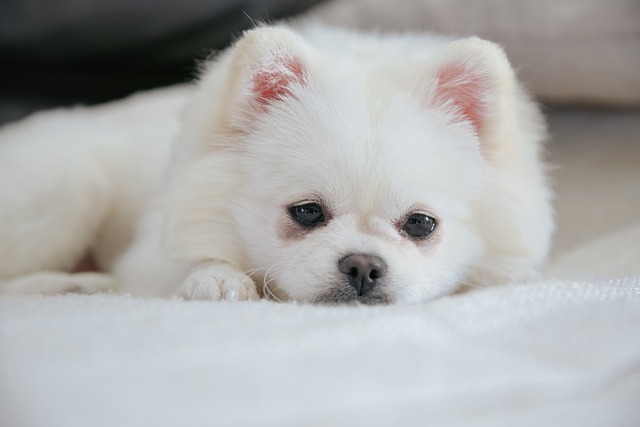
How can I tell if my dog's heatstroke is serious
Let’s be real: It’s a sticky August morning in Los Angeles, and you took your 2-year-old Golden Retriever, Max, for a walk a little later than usual
Pomeranians, with their fluffy coats and bright eyes, often win hearts easily—but those extra pounds can sneak up fast. A chubby Pom might look cute, but it strains their tiny joints and raises risks for diabetes or heart issues. Shedding weight safely takes more than just cutting treats; it means balancing activity, diet, and understanding what makes these little dogs tick.
Start with portion control, but don’t guess. Grab a measuring cup and check the feeding guidelines on your dog’s food bag—then scale back slightly if your vet approves. Many owners overfeed without realizing it, especially when mixing in table scraps. In places like California, where pet obesity rates are climbing, vets often note that "human food snacks" are a top culprit. Skip the cheese bits and opt for carrot sticks instead; they’re low-cal and crunchy, which Poms love.
Exercise matters, but Pomeranians aren’t built for marathons. A 15-minute walk twice a day works better than a single long trek, especially in hot weather—their thick coats make them prone to overheating. Add indoor playtime with a small ball or a feather wand; 10 minutes of chasing can burn more calories than you’d think. Just avoid intense workouts right after meals, as it can cause stomach issues, a common concern noted in UK pet health guidelines.
 Watch for hidden calories. Dental chews and training treats add up quickly. Break store-bought treats into smaller pieces, or use fresh blueberries—they’re low in sugar and packed with antioxidants. In some European countries, pet owners are encouraged to check treat labels for added sugars, much like they would for human snacks. Your vet can help calculate daily calorie limits, ensuring treats stay under 10% of your Pom’s total intake.
Watch for hidden calories. Dental chews and training treats add up quickly. Break store-bought treats into smaller pieces, or use fresh blueberries—they’re low in sugar and packed with antioxidants. In some European countries, pet owners are encouraged to check treat labels for added sugars, much like they would for human snacks. Your vet can help calculate daily calorie limits, ensuring treats stay under 10% of your Pom’s total intake.
Consistency is key, but so is patience. Healthy weight loss for a small dog is about 0.5 to 1 ounce per week. Weigh your Pom regularly, but do it at the same time—morning, before breakfast—to get accurate numbers. If you notice lethargy or loss of appetite, pause and consult your vet. In many U.S. states, regular vet check-ups are part of responsible pet ownership laws, and they’re crucial here to rule out thyroid issues, which can cause weight gain.
Celebrate small wins. When your Pom starts jumping onto the couch with ease or keeps up during walks, that’s progress. Remember, this isn’t just about looks—it’s about keeping them playful and pain-free for years. With the right mix of smart feeding, fun exercise, and a little discipline, your fluffy friend will be back to their energetic self in no time.

Let’s be real: It’s a sticky August morning in Los Angeles, and you took your 2-year-old Golden Retriever, Max, for a walk a little later than usual

You're enjoying a summer afternoon at the park when you notice your dog has stopped panting and appears disoriented - their gums are bright red

Let’s paint the picture: You’re in your Denver apartment, watching your 4-year-old Boston Terrier, Ruby, plop down mid-play session with her favorite toy

Many dog owners notice their pets nails seem shorter after regular walks,but how much does this daily activity actually help?The answer depends on where you walk—concrete sidewalks or asphalt streets gently file nails as a dog's paws hit the ground

Most dog owners notice their pup scooting across the carpet at some point, but few connect it to impacted anal glands. These small sacs near a dog’s rectum secrete a scent for marking territory

Most vets agree that regular dog teeth cleaning is key to avoiding painful dental issues later. For healthy adult dogs, a professional cleaning at the vet’s office every 12 to 18 months usually works well.